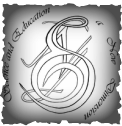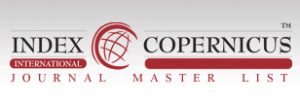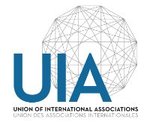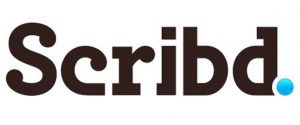Science and Education a New Dimension
Iss. 150. 2018.
A. G. Baghdasaryan Some problems in the translation of the metaphor
https://doi.org/10.31174/SEND-PH2018-150VI43-01
Abstract. The purpose of the article is to study the different issues of the translation of metaphors summarizing the opinions of various translation scholars on this matter. Although the metaphor has become the object of many studies and different definitions and classification principles have been offered, a unanimous opinion regarding the translation techniques and principles of the metaphor still does not exist. Actually, it is a dynamic concept which is impossible to classify by strict delimitations and the selection of the translation techniques is, eventually, determined by the communicative objective of the author of the text.
Keywords: metaphor, translation, linguistic and extralinguistic factors, translation technique, communicative intention, dynamic concept.
A. G. Baghdasaryan Some problems in the translation of the metaphor
O. I. Chernenko The value-philosophical paradigm of Viktor Boyko's poetic language
https://doi.org/10.31174/SEND-PH2018-150VI43-02
Abstract. The article reveals the concept of values as a philosophical category of understanding the world of the internal and external, made an attempt to classify values, outlines the relationship between poetry and philosophy, the material and ideal, real and imaginary worlds, and explores the philosophical concepts of the formation of the value concept of the world of the individual. The peculiarity of the language of the poetic work, the figurative system of the verse stanzas, which are the basis of Viktor Boyko’s creative style, is analyzed and singled out.
Keywords: philosophy, value, worldview, poetry, language, creative style.
O. I. Chernenko The value-philosophical paradigm of Viktor Boyko’s poetic language
A. L. Chornii Language deviations as the criterion of communicative competence of negotiator
https://doi.org/10.31174/SEND-PH2018-150VI43-03
Abstract. The article deals with the notion of language deviation that can be represented as a communicative error within a dialogue. The actuality of the article is caused by the necessity to deep into the features of the communicative errors and their classification in order to predict actual communicative strategies for overcoming communicative mistakes in the process of negotiation. Essential part in correcting communicative errors denotes to the communicative tactics such as repetition, paraphrasing, contradiction, explanation and apologizing. Such techniques realize both corrective and preventative functions in communication.
Keywords: language deviation, communicative mistake, communicative error, communicative competence of a mediator.
A. L. Chornii Language deviations as the criterion of communicative competence of negotiator
O. M. Donik Functional-stylistic emphasis in the comparative constructions in the works by Nadiika Gerbish
https://doi.org/10.31174/SEND-PH2018-150VI43-04
Abstract. The article is devoted to the study of the functional-stylistic emphasis in the comparative constructions in the works by Nadiika Gerbish. The nature of comparison as a statement is substantiated in the context of linguistic stylistics in which the representation of the depicted subject is specified by comparing it to another subject that contains the necessary features in a more concentrated expression. The range of represented comparative concepts is outlined; the estimated and characterological significance of the comparative units is demonstrated. The emphasis is placed on the fact that comparative constructions as one of the means of expressing author’s modality allow to recreate the emotional and mental state of the character under certain circumstances, to describe the nature, premises, groceries, etc. The identified comparative idiomatic structures prove the writer’s diversified language and skills in reflecting Ukrainian cultural flair.
Keywords: comparison, comparative construction, function-stylistic emphasis, comparative connectors, Nadiika Gerbish.
O. M. Donik Functional-stylistic emphasis in the comparative constructions in the works by Nadiika Gerbish
N. G. Khodakovskа Development of the poetic norm of German poetic texts in the ХVIII century
https://doi.org/10.31174/SEND-PH2018-150VI43-05
Abstract. The article is devoted to the evolution of the poetic norm of German poetic texts of the Enlightenment, which reached its heyday in the ХVIII century. The influence of German poetic texts on the poetic norm is determined by the general conditions for the development of literary norms in this era, individual linguistic practice and individual preferences of poets, new vision and understanding of the norm in its new temporal and aesthetic dimension.
Keywords: German poetry, poetic norm, poetic text, classicism, rococo, the era of Enlightenment.
N. G. Khodakovskа Development of the poetic norm of German poetic texts in the ХVIII century
O. L. Kozachyshyna, O. O. Zmievska Imagery as the Reflection of Gender Specific Picture of the World: Individual Author’s Perspective
https://doi.org/10.31174/SEND-PH2018-150VI43-06
Abstract. The subject-matter of the article is the gender differences in the world picture of individual authors as language personalities. The re- search focuses on the target domains of imagery in the novels “Tender is the Night” by F.S. Fitzgerald and “Save Me the Waltz” by Z. Fitzgerald.
Keywords: gender, cognitive style, imagery, source domain, target domain, concept, picture of the world.
O. L. Kozachyshyna, O. O. Zmievska Imagery as the Reflection of Gender Specific Picture of the World: Individual Author’s Perspective
T. V. Lunyova The concept LANGUAGE OF PAINTING in John Berger’s essays on art
https://doi.org/10.31174/SEND-PH2018-150VI43-07
Abstract. The article focuses on the analysis of the concept LANGUAGE OF PAINTING represented in John Berger’s essays on art. The study is grounded in the methodological foundations of the cognitive-discursive linguistic paradigm. The structure of the concept LANGUAGE OF PAINTING is modeled as a complex interrelation of the conceptual oppositions TRADITION :: INNOVATION, EXCEPTIONAL :: AVERAGE/ TYPICAL, VISIBLE :: INVISIBLE, TRUTH :: LIE and the frame “Painter’s struggle”. Besides, the three peculiarities of the actualization of the given concept in the discourse of the essays are determined and described.
Keywords: concept, verbalization, essays on art, cognitive-discursive, structure of the concept.
T. V. Lunyova The concept LANGUAGE OF PAINTING in John Berger’s essays on art
A. V. Lupol World cultural range of works by V. Stus: an anthroponymic pivot
https://doi.org/10.31174/SEND-PH2018-150VI43-08
Abstract. The article is devoted to the study of linguistic nature and functional specificity of the artistic poetonymic of V. Stus, which corresponds to the general problems of literary onomastics. It is proved that the main categories of proper names in the works of V. Stus are concentrated in the anthroponymic segment of the author’s onym space. A special role in the author’s nominal amplitude is played by the names of the real figures of the world cultural circle, which embody the basic moral and ethical concepts for the writer and act as the concentrators of its idiolectic structure.
Keywords: V. Stus, onym space, anthroponyms of the world cultural circle, semantics, symbol, idiolect.
A. V. Lupol World cultural range of works by V. Stus: an anthroponymic pivot
O. B. Novosadska The concept of Frame and the Framing Process
https://doi.org/10.31174/SEND-PH2018-150VI43-09
Abstract. A number of researches based on cognitive approach to the language phenomenon study is increasingly growing in linguistics. This approach enriches scientific research with new conceptual apparatus, different methods and experimental procedures. It also makes possible to give a fresh look on verbalization of the received information. One of the research methods used to analyze how verbal and mental units are connected is frame analysis. Concepts can be represented as frames ,i.e., recursive attribute-value structures. The «sche- mata of interpretation», which are labeled «frames», enable individuals to «locate, perceive, identify, and label» occurrences or infor- mation.[4, p.45]. This constructionist conception of framing makes strong assumptions about individual cognitive processes – structuredness of cognitive representations and theory guidedeness of information processing. These are the same assumptions that are shared or investigated by cognitive psychologists or other cognitively oriented researchers using similar terms. The Frame is multiaspect cognitive phenomenon connected with the process of lingual categorization, keeping and representing information. Due to a distinct structure of the frame and its linguocognitive status, the theory of frame is widely used in many spheres of linguistics, e.g. in studying the specifics of lexical units of national language usage; in the analyses of derivational processes; in grammatical structures analyses; in fiction, scientific, journalistic texts and their pragmatic description; in cognitive units; in theory of translation. Cognitive frames are usually expressed as “slot-filler representations”, structures of interconnected roles together with constraints on the possible or likely fillers of those roles . Examples of such frames are (1) the partially ordered set of events, as well as the participants in such events, that one can expect in a typical visit to a restaurant, barbershop, or hospital, (2) stages and processes in the life cycle of a human being,(3) the organization of a human face, and countless others[ 10, p.51]. As humans we experience some of these frames by virtue of living on the earth, of our daily routines and of entities that we perceive; other frames appear because we are humans with bodies that respond to gravity and to our biological and emotional needs, and with the perceptual faculties that our bodies possess; we form other frames by being members of a particular culture, where we consciously or unconsciously respond to institutions, symbols, artifacts, and values of culture ; and, importantly, still other frames we have by virtue of being a part of the specific speech community that supports and is supported by culture. Thus, we have schematic knowledge about gravity, heat, and shadows, the difference between living and non- living things, about colors, pain, joy and jealousy, about marriage, government and religion, and about weekends, heartburn, military titles.
Keywords: frame, slot, prototype, concept, cognitive units.
O. B. Novosadska The concept of Frame and the Framing Process
N. N. Popova Polyapellativeness of language units in the context of synchronic-diachronic analysis of the Spain national conceptual sphere
https://doi.org/10.31174/SEND-PH2018-150VI43-10
Abstract. The research is devoted to the study of the role of poly-apellative language units in the development of the Spanish national conceptual sphere, their influence on the variability of concepts’ associative links network, the expansion of concepts’ meaningful and value components and changes in the set of conceptual core prototype categories. The ability of universal concepts’ verbalizers to appeal to a significant number of components of the national conceptual sphere due to differences in communicative contexts, both on the synchronic and diachronic levels, is determined.
Keywords: poly-appellative language units, conceptual sphere, nationally-tagged concept, associative component, prototype core basic categories, evolutionary processes.
N. N. Popova Polyapellativeness of language units in the context of synchronic-diachronic analysis of the Spain national conceptual sphere
T. O. Razumenko The organization of students’ study control as activity of faculty boards of Ukrainian universities at the second half of the XIXth century
https://doi.org/10.31174/SEND-PH2018-150VI43-11
Abstract. The article reveals the authorities of Faculty Boards of Ukrainian Universities at the second half of the XIXth century on ensuring teaching and educational process, in particular the organization of students’ knowledge control; the attention is focused on the factors of effective work of Faculty Boards in the conditions of operation the Charters (1863-1884 years); the characteristics of types and forms of the control during the researched period is given.
Keywords: faculty board, studying, control, organization, students, universities.
T. O. Razumenko The organization of students’ study control as activity of faculty boards of Ukrainian universities at the second half of the XIXth century
S. B. Shylo Agitation-political discourse in the context of the theory of discourse
https://doi.org/10.31174/SEND-PH2018-150VI43-12
Abstract. The article describes the phenomenon of political discourse and outlines the approaches to its interpretation. Different interpreta- tions of the concepts of “political discourse”, “political language” and “agitation and political language” were systemized. Two approaches to the analysis of the political discourse were defined, namely: narrow (the discourse of the politicians) and wide (forms of the communication in which to the sphere of politics relates at least one of the components: subject, addressee or content). Based on the main purpose of the political discourse – the persuasion of the addressee and the prompting to the needed choice, which is realized with using the most popular approach of the political struggle – agitation, agitation-political discourse is singled out as a type of political discourse.
Keywords: political discourse, agitation, political language, agitation and political discourse.
S. B. Shylo Agitation-political discourse in the context of the theory of discourse
L. M. Snigyrova Folklor in formation of national identity
https://doi.org/10.31174/SEND-PH2018-150VI43-13
Abstract. The article examines the influence of the Ukrainian historical song on the formation of the national identity of Ukraine. Modern society faces the blurring of national cultures in the face of globalization, therefore research is directed at song creativity, which makes it possible to perceive it as a concept of spiritual and moral positivity as the basis of national consciousness. The historical preconditions of formation of national consciousness of Ukrainians are analyzed. The relationship between Ukrainian historical songs of the period of the liberation war of 1648-1654 with the rebel songs of the Second World War is traced.
Keywords: folklore, national identity, historical songs, self-identification.
L. M. Snigyrova Ffolklor in formation of national identity
S. V. Storcheus Colour symbolism in the African American detective fiction of W. Mosley
https://doi.org/10.31174/SEND-PH2018-150VI43-14
Abstract. The article deals with the colour symbolism in the African American detective fiction of W. Mosley, which is closely related to ethnical and racial origin of characters. The expressive means of language, which the author uses to characterize the characters’ skin shades, are analyzed in detail. W. Mosley achieves expressiveness in describing the characters due to using the figures of speech and tropes (simile, epithet, oxymoron). Complex translation transformations at different levels (lexical, grammatical, pragmatic) are used to render the expressiveness in the translation.
Keywords: African American detective fiction, ethnical and cultural identity, colour symbolism, translation transformations.
S. V. Storcheus Colour symbolism in the African American detective fiction of W. Mosley
A. V. Tarasova Translation of English comparative phraseologisms: cultural aspect
https://doi.org/10.31174/SEND-PH2018-150VI43-15
Abstract. The article deals with the issues of translation of cultural aspects of English comparative phraseologisms into target language. The main translation challenge is caused by complexity of rendering imagery and phraseological meaning of the units. Difficulties in adequate rendering of the meaning of English language into Ukrainian arise for cultural discrepancies. Hence, translator is required to focus on rendering not only contents / meaning, but also expressive and stylistic colouring.
Keywords: comparative phraseologisms, translation, dictionary phraseology, author’s phraseology, imagery of comparative phraseologisms.
A. V. Tarasova Translation of English comparative phraseologisms: cultural aspect
V. V. Teleutsia National communicative markers of folklore text
https://doi.org/10.31174/SEND-PH2018-150VI43-16
Abstract. The article deals with implementation of nomines at the lexical level of Ukrainian folklore works. The nature of communicative markers and specifics of folklore texts are determined. On the example of the ethnonym “garbuz” (pumpkin) is analyzed the relationship between the nominative derivatives and associative thinking of man, as well as the phenomenon of polysemy. Proved dependence of the nomination from mental and ethnic features of the language community which used in folklore works.
Keywords: intangible cultural heritage, folklore text, communicative marker, nominates, symbol, “garbuz” (pumpkin).
V. V. Teleutsia National communicative markers of folklore text
T. M. Yefymenko Researches of the language interference in the social, psychological and linguistic meaning
https://doi.org/10.31174/SEND-PH2018-150VI43-17
Abstract. The theoretical bases of the interference research are analyzed in this article, the concept of «interference» is found out, the classification of generally linguistic features of the linguistic phenomenon is characterized, studying of its role and function in the social, psychological and linguistic meaning. Comprehensive study of interlingual interference from the point of view of social and psycholinguistics, which will facilitate the disclosure of the causes of the emergence, prevention, detection and suppression of speech interference phenomena.
Keywords: interference, language contacts, accent, bilingualism, bilinguals, psycholinguistics.
T. M. Yefymenko Researches of the language interference in the social, psychological and linguistic meaning







